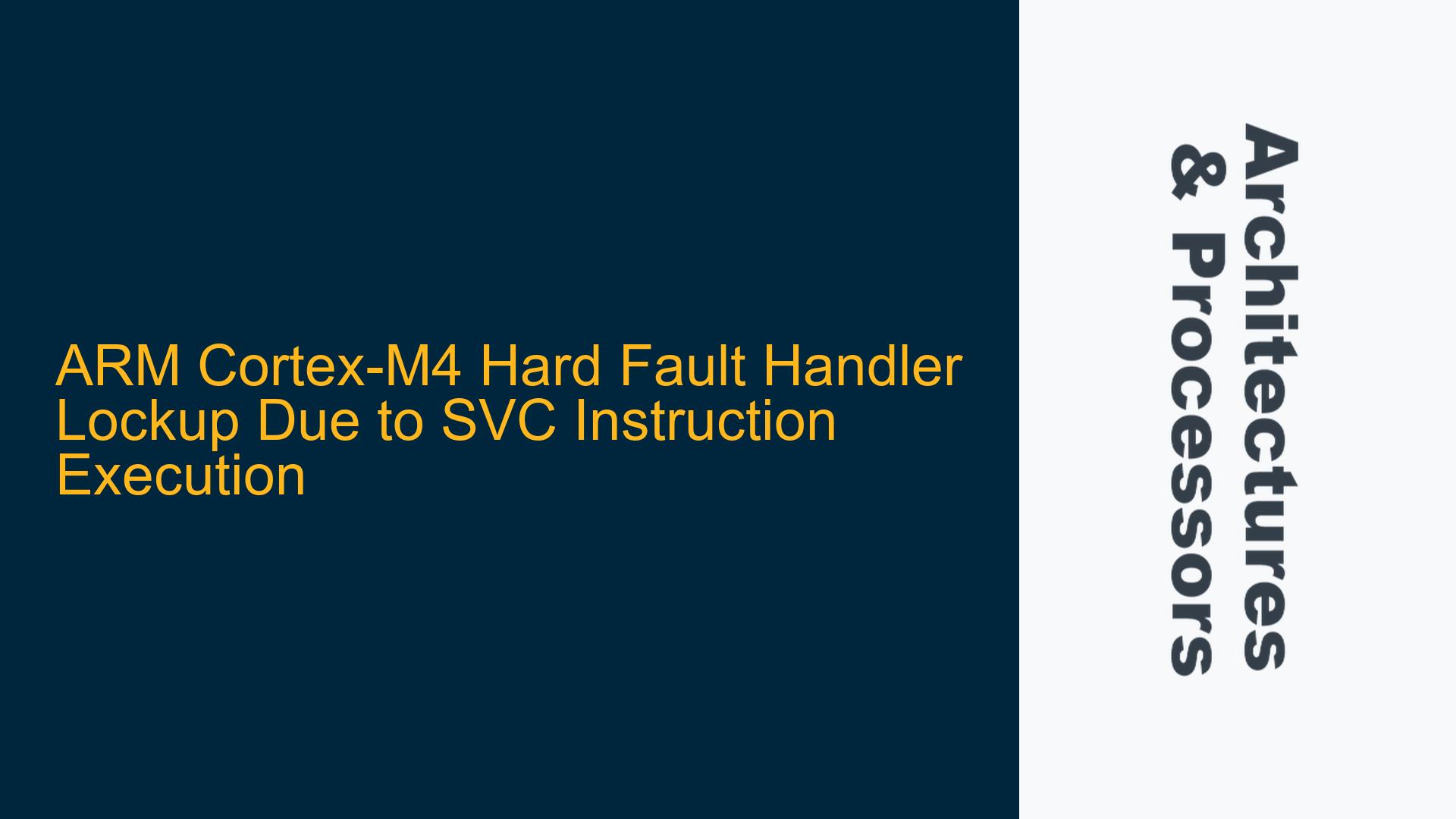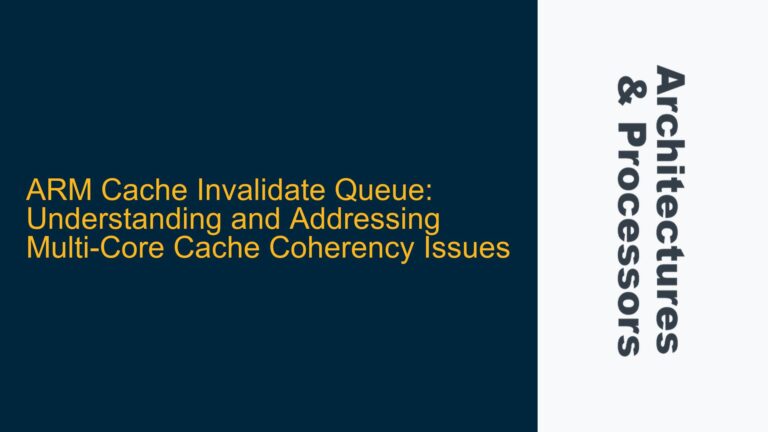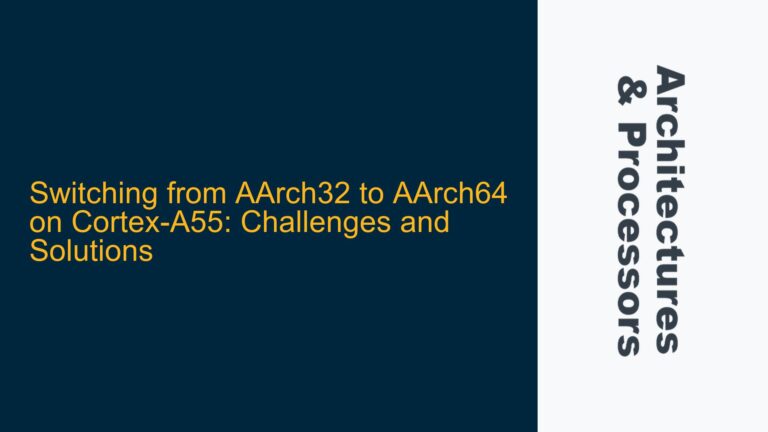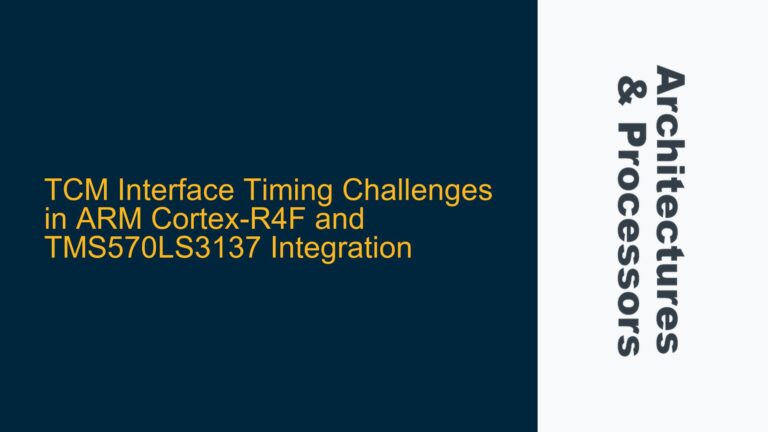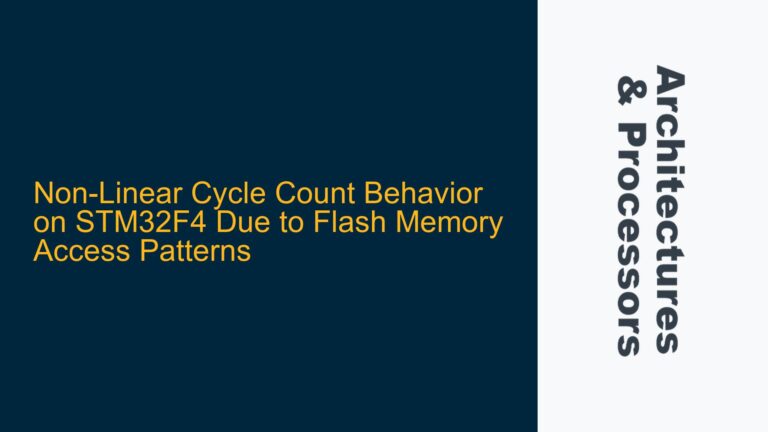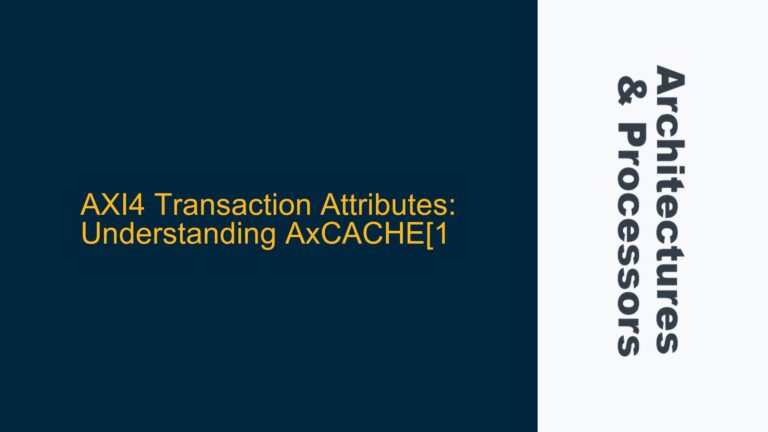ARM Cortex-M4 Hard Fault Handler Lockup Due to SVC Instruction Execution
Issue Overview
The core issue revolves around the execution of the Supervisor Call (SVC) instruction within the Hard Fault Handler on an ARM Cortex-M4 processor, specifically the STM32F407VG microcontroller. When the SVC instruction is executed inside the Hard Fault Handler, the system enters a lockup state, leading to a reset. This behavior is consistent with the ARM Cortex-M architecture’s handling of nested exceptions and fault conditions.
The Hard Fault Handler is invoked when the processor encounters a severe error, such as an invalid instruction execution due to the Thumb (T) bit in the Execution Program Status Register (EPSR) being cleared. The T-bit indicates whether the processor is in Thumb state (T-bit = 1) or ARM state (T-bit = 0). The Cortex-M4 processor only supports Thumb state execution, and any attempt to execute instructions with the T-bit cleared results in a fault.
In the provided scenario, the T-bit is intentionally cleared to trigger a Hard Fault. Upon entering the Hard Fault Handler, the SVC instruction is executed, which attempts to invoke a lower-priority exception (SVC) from within a higher-priority exception (Hard Fault). This action violates the ARM Cortex-M exception handling model, leading to a lockup state. The lockup state is a safety mechanism to prevent further execution in an unrecoverable fault condition, and the default behavior is to reset the system.
Possible Causes
The root cause of the system reset lies in the interaction between the exception priority levels, the lockup mechanism, and the SVC instruction execution within the Hard Fault Handler. Below are the key factors contributing to this issue:
-
Exception Priority Levels and Nesting:
The ARM Cortex-M architecture defines a strict priority hierarchy for exceptions. The Hard Fault exception has a higher priority than the SVC exception. When the SVC instruction is executed within the Hard Fault Handler, the processor attempts to handle a lower-priority exception (SVC) while still processing a higher-priority exception (Hard Fault). This nesting of exceptions is not permitted and triggers a lockup. -
Lockup Mechanism:
The lockup mechanism is a safety feature in ARM Cortex-M processors designed to handle unrecoverable fault conditions. When the processor enters lockup, it stops executing instructions and remains in this state until a reset, Non-Maskable Interrupt (NMI), or debugger intervention occurs. In this case, the execution of the SVC instruction within the Hard Fault Handler causes the processor to enter lockup, leading to a reset. -
T-bit Manipulation and Fault Triggering:
The intentional clearing of the T-bit in the EPSR to trigger a Hard Fault is a valid method to simulate a fault condition. However, the subsequent execution of the SVC instruction within the Hard Fault Handler exacerbates the fault condition, leading to lockup. The T-bit manipulation itself is not the direct cause of the reset but serves as the initial trigger for the Hard Fault. -
Hardware-Specific Behavior:
While the ARM Cortex-M architecture defines the general behavior for lockup and exception handling, specific microcontrollers may implement additional logic to handle fault conditions. For example, some microcontrollers may include watchdog timers or other reset mechanisms that trigger a reset upon detecting multiple fault conditions. In this case, the STM32F407VG microcontroller follows the default ARM behavior of resetting the system upon lockup.
Troubleshooting Steps, Solutions & Fixes
To address the issue of system reset due to SVC instruction execution within the Hard Fault Handler, the following steps and solutions can be implemented:
-
Avoid Executing SVC in Hard Fault Handler:
The most straightforward solution is to avoid executing the SVC instruction within the Hard Fault Handler. The Hard Fault Handler should be used solely for diagnosing and handling severe fault conditions, not for invoking lower-priority exceptions. Instead of using SVC, consider implementing a direct function call or other mechanisms to perform the desired operations. -
Diagnose and Recover from Hard Fault:
The primary purpose of the Hard Fault Handler is to diagnose the cause of the fault and, if possible, recover from it. To achieve this, the handler should:- Capture and analyze the Hard Fault Status Register (HFSR) and other fault-related registers to determine the cause of the fault.
- Log the fault information for debugging purposes.
- Attempt to recover from the fault by correcting the T-bit or other erroneous conditions, if feasible.
-
Implement a Custom Reset Handler:
If the system must reset after a lockup, consider implementing a custom reset handler to log the fault information before the reset occurs. This can be achieved by:- Storing fault information in a non-volatile memory region (e.g., backup SRAM or Flash).
- Configuring the reset handler to retrieve and analyze the stored fault information after the reset.
-
Use Debugging Tools for Analysis:
Debugging tools such as JTAG or SWD can be invaluable for analyzing the fault condition and the behavior of the Hard Fault Handler. Specific steps include:- Setting breakpoints at the entry of the Hard Fault Handler and SVC Handler to monitor execution flow.
- Using trace capabilities to capture the sequence of events leading to the lockup.
- Inspecting the contents of the stack and registers to identify the root cause of the fault.
-
Modify Exception Handling Logic:
If the application requires the use of SVC within an exception handler, consider modifying the exception handling logic to avoid nesting exceptions. For example:- Use a flag or semaphore to defer the execution of the SVC instruction until after the Hard Fault Handler has completed.
- Implement a secondary handler or task to perform the operations intended for the SVC instruction.
-
Review and Validate Vector Table:
Ensure that the vector table is correctly configured and aligned with the processor’s requirements. Specifically:- Verify that the T-bit is set for all exception handlers in the vector table.
- Confirm that the vector table is located at the correct memory address (0x00000000 or 0x08000000 for STM32F407VG).
-
Consider Hardware-Specific Features:
Some microcontrollers, such as the Silabs EFM32 series, offer hardware options to customize the behavior of lockup conditions. While the STM32F407VG does not provide this feature, it is worth exploring the documentation for any configurable options related to fault handling and reset behavior.
By following these steps, the issue of system reset due to SVC instruction execution within the Hard Fault Handler can be effectively diagnosed and resolved. The key is to adhere to the ARM Cortex-M exception handling model and avoid actions that could lead to unrecoverable fault conditions.
